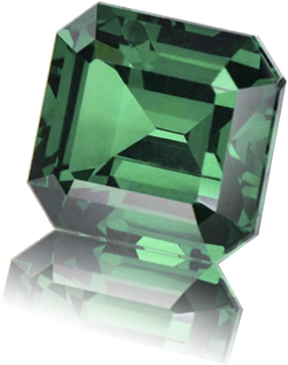

We are currently closed. We will be Re-opening Last Week of November.

Everything you need to know about Tanzanite. Learn all about this beautiful, rare gemstone. Learn about its properties, how to judge quality, pricing, how it is mined, where it comes from and how to spot imitations.

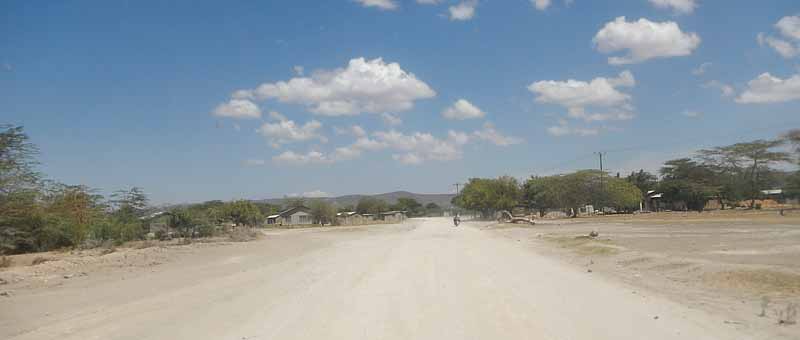
Tanzanite, as with Diamonds, and all gemstones alludes to the 4 C’s of quality - COLOR, CLARITY, CARAT WEIGHT AND CUT. These are where you look to judge quality in a Tanzanite.
TANZANITE
COLOR
This is the most important factor by far but also perhaps the hardest of the 4 C’s to judge online, due to many factors, not least the unreliability of images shown on different seller’s websites. Basically speaking, color saturation defines color quality. Think of color saturation as intensity - how vivid and intense is the color? The picture below demonstrates how as the depth of color declines in a Tanzanite, so does the rarity and quality.
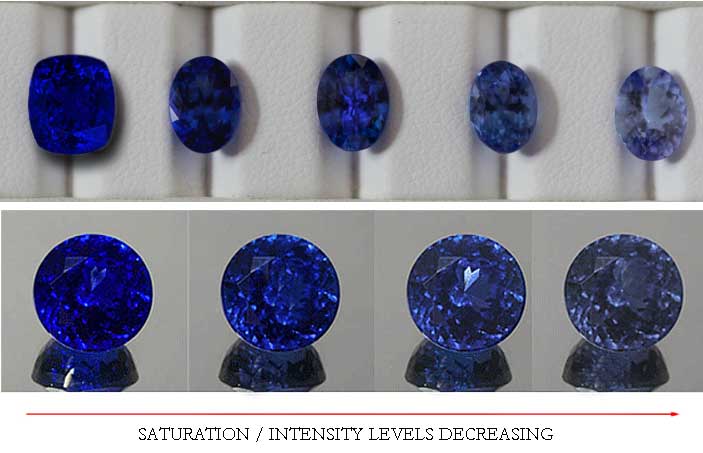
The first of our gemologist written articles in the series How Color Affects Value in Tanzanite goes into depth on this subject and should be your first step in learning about color.
The next obstacle to overcome is to learn about the different color grading systems there are out there. You will encounter many as you research, from the GIA system to the Tanzanite Foundation system and the IGSL system. All have their own approaches.
The second article in our gemologist written series addresses this and will leave you with a better understanding - Tanzanite Color Grading Systems - So Many Out There Which to Trust? The article looks at the main systems in use today including the Tanzanite Foundation system, the GIA system and others.
A good understanding of how these systems work will help you enormously when browsing stones online (or in a store for that matter).
TANZANITE CLARITY
Tanzanite can be flawless or it can be heavily included. Its quality and value is profoundly affected by its clarity grade. Hence, it is very important to understand the different terms in use in the industry and which inclusions you may find in Tanzanite.
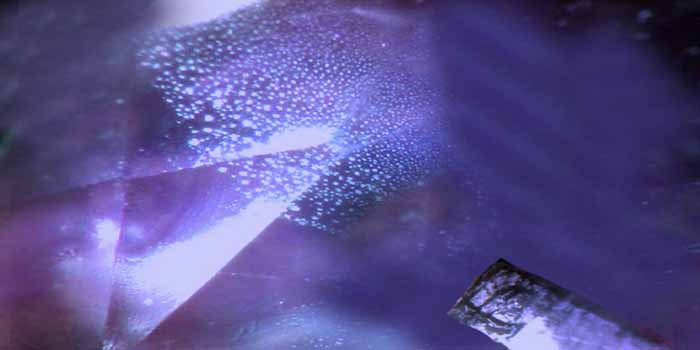
TANZANITE CUT
Whereas the actual shape of a Tanzanite has little impact on its value, the quality of the cut itself is very important. It is an area which is often overlooked in this age of catalog websites which sell huge quantities of medium grades cut in the cutting houses of India. These cutting houses generally use a myriad of weight saving techniques when cutting which can increase the finished weight of a Tanzanite by up to 30%. This means the actual hidden cost of a Tanzanite can be vastly greater than you realize.
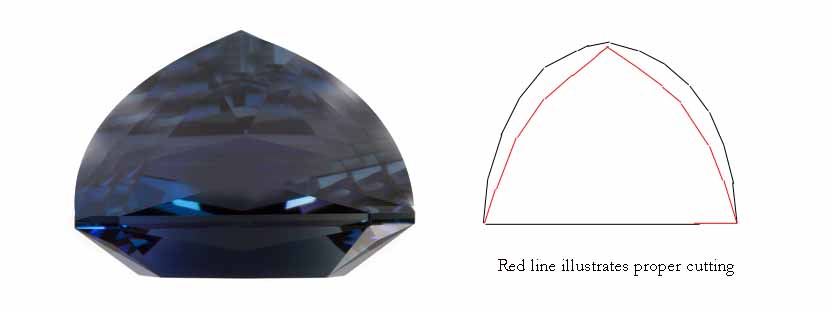
The image above for example demonstrates how with a bulged pavilion, you can end up buying a Tanzanite that carries much more weight in the pavilion (back) than a properly cut stone, hence pushing up your actual cost.
Conversely a Tanzanite that is cut too shallow will display an ugly "window" effect which will severely affect its beauty and value.
The third article in our series Tanzanite Cut - Often Overlooked but Very Important is vital reading in gaining an understanding of this aspect of Tanzanite quality.
TANZANITE CARAT WEIGHT
This is the last of the 4 C’s and the one with the least impact on quality. A carat is a unit of weight measurement and is in fact 1/5 of a gram (as opposed to "karat" which is a ratio used to indicate gold purity).
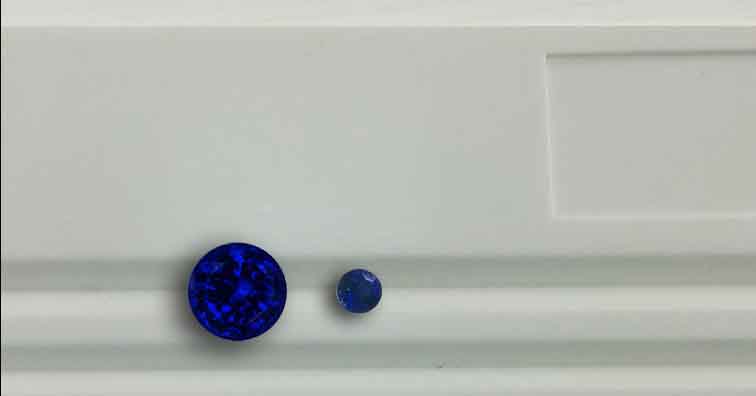
Generally speaking, the larger the Tanzanite crystal in the same quality bracket the rarer it is. This is because larger crystals have taken longer to grow and considering that Tanzanite can take over 500 million years to form, this is saying something!
Carat weight becomes important within quality brackets. A 3 carat exceptional, investment grade color with top clarity will of course always be much rarer and more valuable than a 10 carat B grade color containing inclusions.
Carat Weight versus Face Up Dimensions
A common mistake is to assume you can judge a Tanzanite's (or any gemstone's) physical face up appearance or size, based purely on carat weight. We often hear a client mention that they have a 1 carat Diamond and want the same size Tanzanite to fit in a ring so they will be buying a 1 carat stone. This is not an accurate assumption, because of the simple fact that different gemstones have different densities (known as "specific gravity" in the trade).
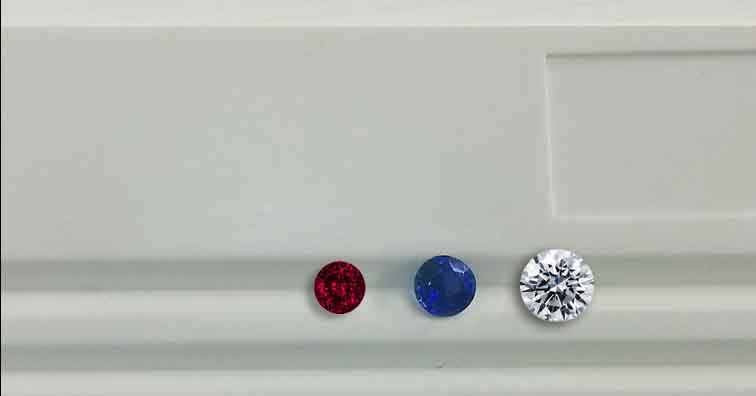
Tanzanite is very sensitive to light and this is due to the fact that it is trichroic. What this means is that a Tanzanite can look very different inside under incandescent (yellowish) light than it does outside in daylight. For this reason gemologists adopt a grading standard to make sure that when they are grading Tanzanites they are making a proper comparison. The grading standard for all colored gems and Diamonds is North Daylight Equivalent which is around 5,500 kelvin.
This video explains how Trichroism works and will give you a good understanding of why the different axes of color affect the way a Tanzanite appears to the eye under different lighting conditions.
Tanzanite's value in the different quality brackets translates into different price points with the rarest grades commanding higher prices than the medium and lower grades.
Color is the most important value factor and deeper colors command higher prices. Clarity also plays an important part and the closer to flawless a Tanzanite is, the more valuable.
What is Tanzanite Worth?
A Tanzanite's value is very much dependent on its quality. Like all gemstones, quality is judged using the 4C's. The finest deeply saturated colors which are flawless command premium prices whilst pale stones or included (lower clarity) stones trade at much lower prices.
Prices can range significantly due to quality, from less than $50 per carat to upwards of $800 per carat. See our article on Tanzanite Prices to see a table of actual prices per carat prevailing in the market this year.
Is Tanzanite More Expensive than Diamonds?
Whereas Tanzanite is actually rarer than Diamond, its price is much lower. If you consider that a fine Diamond in a 5 carat size can range from upwards of $95,000 per carat whilst a very fine 5 carat Tanzanite will be in the $780 to $1,300 range (depending on where you are buying), it gives you a good idea of the disparity.
The Tanzanite market, unlike the Diamond industry is driven purely by the laws of demand and supply. The Diamond market is closely controlled by several large players who control the supply to the market and thus the price.
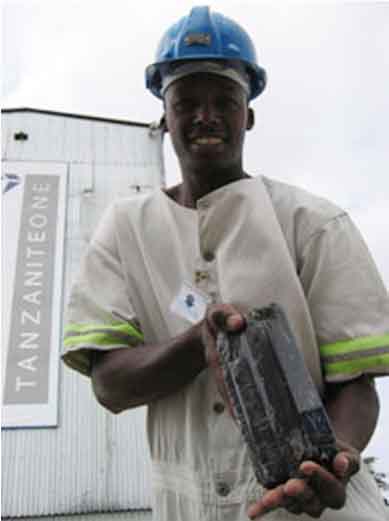
With fluctuating the state of the world economy in the past decade, Tanzanite has fast gained eminence as a tangible investment with great potential. We felt that we needed to make mention of this in this buying guide.
Tanzanite's unique set of economic indicators suggest that it may prove to be a good investment gemstone. This article covers this well Tanzanite as an Investment
This is a question we get asked very regularly. When researching Tanzanite many people are confused as to the role of heating in Tanzanite and whether it plays the same part as an enhancement as it does with gemstones like Sapphire where heating is used to enhance lower grade stones.
This article goes into depth on the subject : Tanzanite Heating - The Facts
When purchasing Tanzanite, one of the most prominent concerns is whether what is being sold is genuine. It is important to attain a basic understanding of the pitfalls that exist in the market in this regard.
Where as Tanzanite has never actually been synthesized (lab created), a number of imitations and treatments, such as coatings do exist in the marketplace which any Tanzanite buyer must make themselves aware of.
This article looks at the basics to give you a good overview : Tanzanite Synthetics and Imitations
Tanzanite was discovered in 1967 in the foothills of Mount Kilimanjaro by Maasai tribesman. Legend has it that a bushfire that had swept the area had heated some surface lying gems which had turned them blue. The tribesmen spotted the blue sparkling stones as they herded their cattle through the area in search of grass.
Having no value to the Maasai, they were shown to a trader in the nearby town of Arusha called Manuel de Souza. Manuel originally thought the stone was a Sapphire and rushed up into the hills to claim the area but was puzzled by this amazing gem that sparkled pink and red within its deep blue color. He laid the very first claim but was unsure where to market this unknown gem material.
It was taken to New York and shown to Henry Platt, Chairman of Tiffany and Company and grandson of the founder. Harry Platt immediately recognized this mysterious stone's potential, described it as "the loveliest blue gemstone discovered in over 2,000 years" and named it after the country of its discovery. Tiffany & Company then negotiated to become its main distributor.
It launched Tanzanite onto the world stage with an unprecedented marketing campaign in 1968. Tanzanite became hugely popular in a very short time, even challenging the "big 3" Ruby, Emerald and Sapphire for dominance in colored gemstone sales in the US market.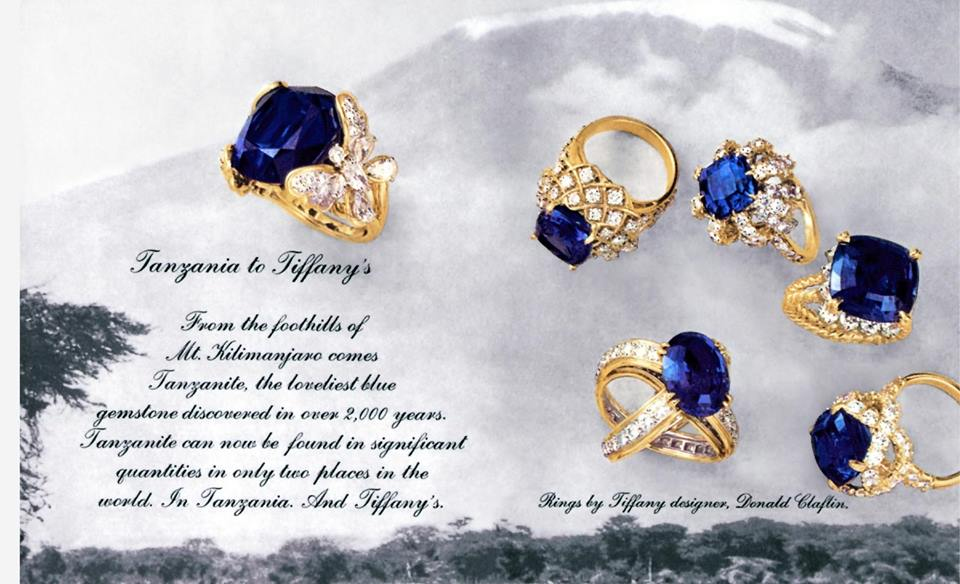
Antony completed his GG (Graduate Gemologist) in 1998 at the Gemological Institute of America in California after a degree a Business at the University of Bath, in England. He has extensive experience in the colored gemstone trade with over 20 years buying rough at the source. He is currently the Ambassador to Kenya for the ICA (International Colored Gemstone Association) in New York which is the worldwide body for colored gemstones.
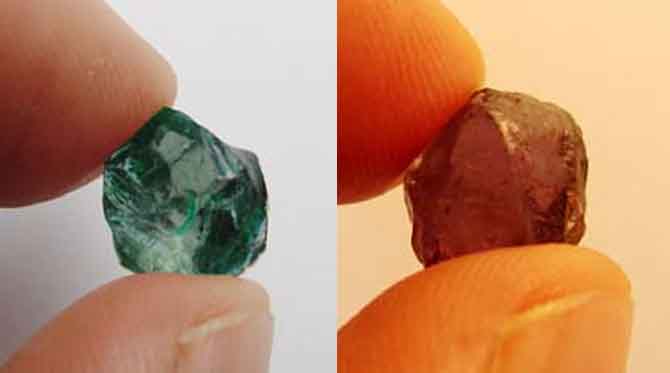
A new discovery in the renowned Taita district of Kenya has taken the gem world by storm. We take a look at the new stone and the discovery.
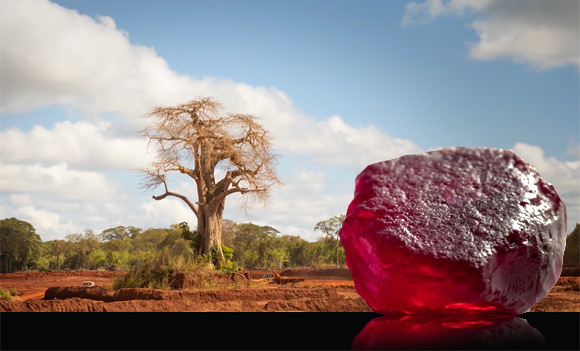
Some of the world's finest and rarest Rubies are now mined in Africa. The traditional sources in Asia have been depleted and there's a new kid on the block. This article delves into the fascinating world of African Rubies, where and how they are mined.
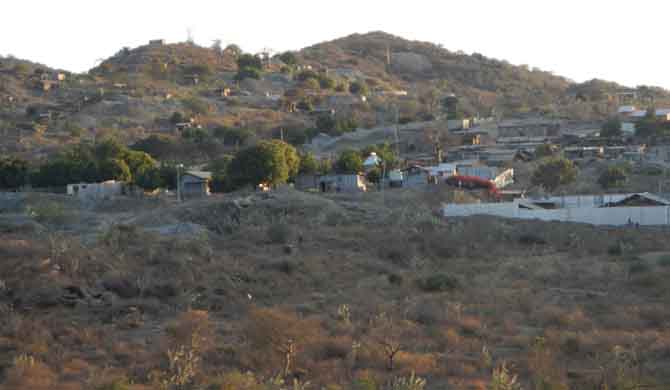
There is a great deal of misinformation currently online regarding what "ethical" Tanzanite mining is. This article explores the different opinions.
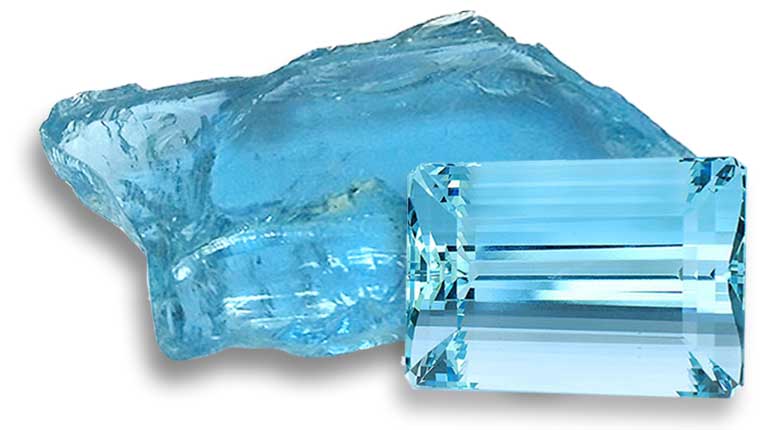
Everything you need to know about Aquamarine Gemstones. Learn all about this beautiful, rare gemstone. Learn about its properties, how to judge quality, pricing, how it is mined, where it comes from and how to spot imitations.
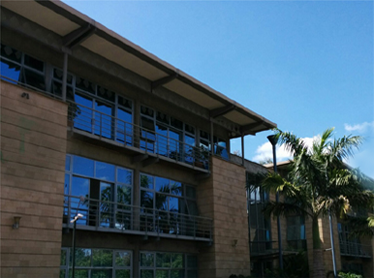

 USA : 1 888 281 3678
USA : 1 888 281 3678 Canada : 1 888 281 3678
Canada : 1 888 281 3678  United Kingdom : 0800 368 6128
United Kingdom : 0800 368 6128 Australia : 1 800 940 788
Australia : 1 800 940 788Direct : +254 20 2641700
Office Hours 9am to 5:30pm Monday to Friday

Direct your questions about shipping, returns,
payments and any other queries

If you can't find what you are looking for in our regular collections,
submit a Special Request and let us cut / source it for you. You will be
notified by email if we find a gem that matches your specs.

Your Product has been successfully added to the cart.
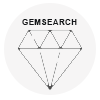
Thank You for submitting a Special Request .
We will notify you by email when we find gems that match your specifications and may interest you.
You can see and manage your special requests in your account by loggin into your account and clicking on the link Special Requests.

MESSAGE SENT
We will respond shortly
ASK A GEMOLOGIST FEATURE
Terms and Conditions of Use
Use of our acclaimed Ask a Gemologist feature which affords you access to certified GIA gemologists is free of charge. However, you agree to the following tenets when you use the Ask a Gemologist feature:
1. You will be signed up as a member of theraregemstonecompany.com with all the rights and privileges of membership.
2. Questions addressed to the Gemologist panel must be related to our business. Questions unrelated to gemstones or jewelry on our website will not be answered.

FRIEND REFERRAL ADDED SUCCESSFULLY
Our system has opened them a Member's Account and sent them
an introduction email. If they purchase off the site, 6% of the sale
will automatically be credited to you EAG Account Statement

NO ITEMS FOUND WITH THAT ID
Thanks for your email .
We will reply shortly.
